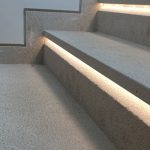Natural Igneous Rock Types: Igneous, External, and Superficial Igneous Rocks

Natural Igneous Rock Types: Igneous, External, and Superficial Igneous Rocks
All stones that are extracted from natural quarry and used after production are called natural stones.
These stones are named in various categories, and sometimes the stone quarry name is used as its name.
Most Common Building Stones
The most common building stones are:
- Granite
- Gabbro
- Sandstone includes calcareous sandstone – siliceous sandstone – iron oxide sandstone – dolomite sandstone
- Diorite
- Quartzite
- Marble
- Marbles
- Travertine
Advantages of Natural Stone
- Natural stones act as a thermal insulation in the house and it is not necessary to use special subspecies for its installation.
- Natural stones are very wide and there are many colors and designs in nature and they have special beauty.
- One of the good natural stones types features is that these stones have good flexibility and formability on surfaces.
Disadvantages of Natural Stone
- These stones types are heavier than artificial stones, so it will take much longer to build natural stone structures.
- It is good to know that natural colors may lose their adhesion and separate from the building body over time due to atmospheric factors.
- Factors such as environmental climate changes can affect the stone texture and cause mold and dandruff cracks on the stone surface.
Types of Natural Stones
Volcanic or Igneous Rocks
Igneous rocks are also known as volcanic rocks and are formed from the magma freezing; Depending on the speed at which magma turns into igneous rock, the crystals size and type will vary. But the faster this process is done, the better the stone texture will be.
External and Internal Igneous Rocks
The igneous formation process rock may be done inside or on the earth surface, and based on this, they can be divided into two categories: external and internal igneous.
Igneous, External, and Superficial Igneous Rocks
But in more detail, they are divided into three groups, which include internal igneous rocks, external igneous rocks, and superficial igneous rocks. Igneous rocks types include:
Internal Igneous Rock
In addition to flowing on the earth surface, magma also flows in underground paths, and if the magma cools in these underground paths, it creates internal igneous rock. The magma movement underground speed is lower, which causes the texture and crystals in this rock type to become coarse.
Surface Igneous Rock
If the magma cools at a shallow level below the crust, it causes surface igneous rock to form. These rocks are not like internal igneous rocks in the earth depth, nor are they placed on the earth’s crust like surface igneous rocks, that’s why they are called surface igneous rocks.
External Igneous Rock
If the magma inside the earth finds a way out, it will flow on the earth surface and form the external igneous rock as a cooling result. The cooling speed is higher in external igneous rocks, and this has caused this rock texture to be finer.
Sedimentary Rocks
After precipitation, rain and snow move towards the seas in the running water form. Rivers usually carry mud, soil, sand, and anything light in its path to the seas and lakes and pile them up on the ocean floor.
Accumulations are placed on top of each other in the form of layers and after some time due to the upper layers’ pressure and water pressure, they become hard and dense and create sedimentary rocks.
Sedimentary rocks are divided into four categories: siliceous sediments, biochemical sediments, igneous sediments and chemical sediments. Sedimentary rocks are very important in the earth’s history study due to remains organisms’ presence and various compounds.
Transformation Stones
Rocks may change from one form to another due to physical and chemical conditions, the rocks resulting from the other rocks change in the solid state are called metamorphic rocks.
If any rock is changed by exposure to high temperature and high pressure or by the replacement of fluids without melting; In such a way that they no longer resemble the primary stones, it is called a metamorphic stone. These changes may occur on metamorphic rocks, sedimentary rocks, and igneous rocks.
Note: Contact us directly to our WhatsApp through this Link: https://wa.link/ord5k8
Sources
Memarian H. (2008), “Engineering Geology and Geotechnics”, Tehran University, Publishing and Printing Institute, 954 pages.
Fazlnia A., Pir Kharati and Moradi H. (2016), “Applied Petrology”, Urmia University, Urmia University Publications, 354 pages
Article
Natural Stone Applications
- 22 December 2022
Iranian Stones Introduction According to Source and Quarry
- 21 December 2022
Technical Stone Introduction and Quarrying Procedures
- 21 December 2022
Categories
- blog757
- news1
- Specialized articles756













